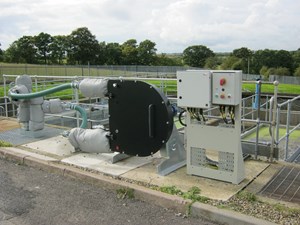- Waste Water Treatment
Peristaltic Pumps For Waste Water Treatment Works (WWTWs)
Peristaltic Pump Advantages

- Wear as a result of abrasion from hard solids is mitigated as a result of everything being self-contained within the hose element which is an issue with most pump types especially where rotating elements come directly into contact with the product.
- In most instances the use of our peristaltic pumps negates the need to macerate the product prior to being pumped in order to avoid ragging which is a common solution associated with progressive cavity pumps.Wear as a result of abrasion from hard solids is mitigated as a result of everything being self-contained within the hose element which is an issue with most pump types especially where rotating elements come directly into contact with the product.
- In dosing applications sodium and calcium hypochlorite (“hypo”) tends to off-gas when pumped which can result in vapour-locking in diaphragm pumps.
- Salt solutions (also common in water softening processes) can prevent valves from closing which can lead to the pumps running dry. Internally there are no valves to close within a peristaltic pump and it’s quite happy to run dry until the cows come home.
- With a suction lift of around 9 metres peristaltic pumps are a simpler alternative to traditional submersible sump pumps.
Peristaltic hose pumps are highly beneficial in the wastewater treatment industry due to their ability to handle a wide range of fluids, including corrosive and abrasive liquids, making them ideal for use in applications such as sludge transfer and dosing. As manufacturers of peristaltic pumps, we understand the unique challenges faced by the WWTW industry, and our pumps have been specifically designed to meet those challenges.
Our peristaltic hose pumps offer a notable advantage in the wastewater treatment industry due to their capacity to handle high viscosity fluids effortlessly. In this sector, sludge is often present as a residue of the treatment process, but our pumps have been engineered to handle the dense, viscous material with ease. Thanks to the peristaltic pumping mechanism, the sludge is moved through the hose smoothly, which mitigates the risk of blockages and minimizes wear and tear on the pump parts.
Another advantage of peristaltic hose pumps is their gentle pumping action. Unlike other types of pumps that use impellers or vanes to move fluids, peristaltic pumps use a squeezing action that ensures the fluid is not subjected to any excessive shear forces. This is particularly important in the WWTW industry, where delicate biological materials are often present in the wastewater. By using a peristaltic pump, these materials can be moved without being damaged, ensuring that the treatment process is not compromised.
Peristaltic pumps are also highly accurate and precise, making them ideal for dosing applications. In the WWTW industry, chemicals are often added to the wastewater to aid in the treatment process, and our pumps can accurately dispense these chemicals at the required rate. This ensures that the treatment process is effective and efficient, reducing costs and improving overall performance.
The design of our peristaltic hose pumps also makes them highly reliable and easy to maintain. With no seals or valves to replace, maintenance is minimal, reducing downtime and maximizing productivity. In addition, the hose can be easily replaced without the need for specialist tools or training, ensuring that the pump can be quickly and easily maintained by on-site personnel.
Overall, the benefits of peristaltic hose pumps in the WWTW industry are numerous. Their ability to handle high viscosity fluids, gentle pumping action, precision dosing, and reliability make them an ideal choice for a wide range of applications in this sector. As manufacturers of peristaltic pumps, we are committed to providing high-quality, reliable solutions to meet the specific needs of the WWTW industry, helping to ensure the effective and efficient treatment of wastewater for years to come.